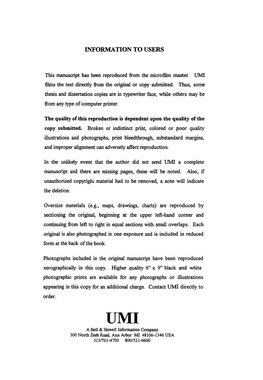| dc.contributor.advisor | Butler, Stephen A., | en_US |
| dc.contributor.author | Boldt, Margaret Naomi. | en_US |
| dc.date.accessioned | 2013-08-16T12:29:49Z | |
| dc.date.available | 2013-08-16T12:29:49Z | |
| dc.date.issued | 1997 | en_US |
| dc.identifier.uri | https://hdl.handle.net/11244/5521 | |
| dc.description.abstract | The direction of a change in performance measure outcomes (increase versus decrease) and ambiguity (high versus low) were manipulated in a 2 X 2 between-participants experiment. Participants were business students in graduate accounting classes. The participants played the role of an evaluator in a multi-divisional firm. Each condition of the task supplied historical return on investment percentages and evaluation scores for the prior five years. In addition, the task supplied the expected return on investment percentage and evaluation score for the prior five years. In addition, the task supplied the expected return on investment percentage and evaluation score for the upcoming period. Then, a common factor that differentially affected return on investment percentage for each division was described along with the actual return on investment percentages. The difference between the actual and expected return on investment percentages was entirely attributable to the common factor. The difference between expected and elicited evaluation scores measured the degree of bias from functional fixation in each evaluation. | en_US |
| dc.description.abstract | Relative performance evaluations require evaluators to assess managers' performance levels, relative to the performance of other managers who face the same operating conditions. When accounting-based performance measures are used for relative performance evaluations, evaluators must filter out the effects of common factors that differentially affect those measures. Research has demonstrated that accounting information users frequently exhibit functional fixation by fixating on accounting measures and failing to adequately adjust their decision processes when the method of calculation and/or the outcome of an accounting measure changes. This study uses a relative performance evaluation task to investigate the hypothesis that the degree of bias from functional fixation varies with context. | en_US |
| dc.description.abstract | The results indicate that the degree of bias in evaluations varies with the direction of change in performance measure outcomes. Specifically, the hypothesis that bias is greater when performance measures decrease was generally supported. The manipulation check for ambiguity revealed that participants did not perceive a difference in the two ambiguity conditions. Still, the hypothesis that bias is greater in more ambiguous contexts was partially supported. The implication is that management accountants should provide evaluators with performance measures that remove the effects of common factors. | en_US |
| dc.format.extent | x, 106 leaves : | en_US |
| dc.subject | Psychology, Industrial. | en_US |
| dc.subject | Business Administration, Management. | en_US |
| dc.subject | Business Administration, Accounting. | en_US |
| dc.subject | Managerial accounting. | en_US |
| dc.subject | Executives Rating of. | en_US |
| dc.title | The effects of functional fixation on relative performance evaluations. | en_US |
| dc.type | Thesis | en_US |
| dc.thesis.degree | Ph.D. | en_US |
| dc.thesis.degreeDiscipline | Michael F. Price College of Business | en_US |
| dc.note | Source: Dissertation Abstracts International, Volume: 58-08, Section: A, page: 3197. | en_US |
| dc.note | Chair: Stephen A. Butler. | en_US |
| ou.identifier | (UMI)AAI9806314 | en_US |
| ou.group | Michael F. Price College of Business | |
